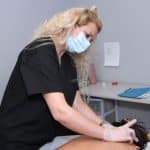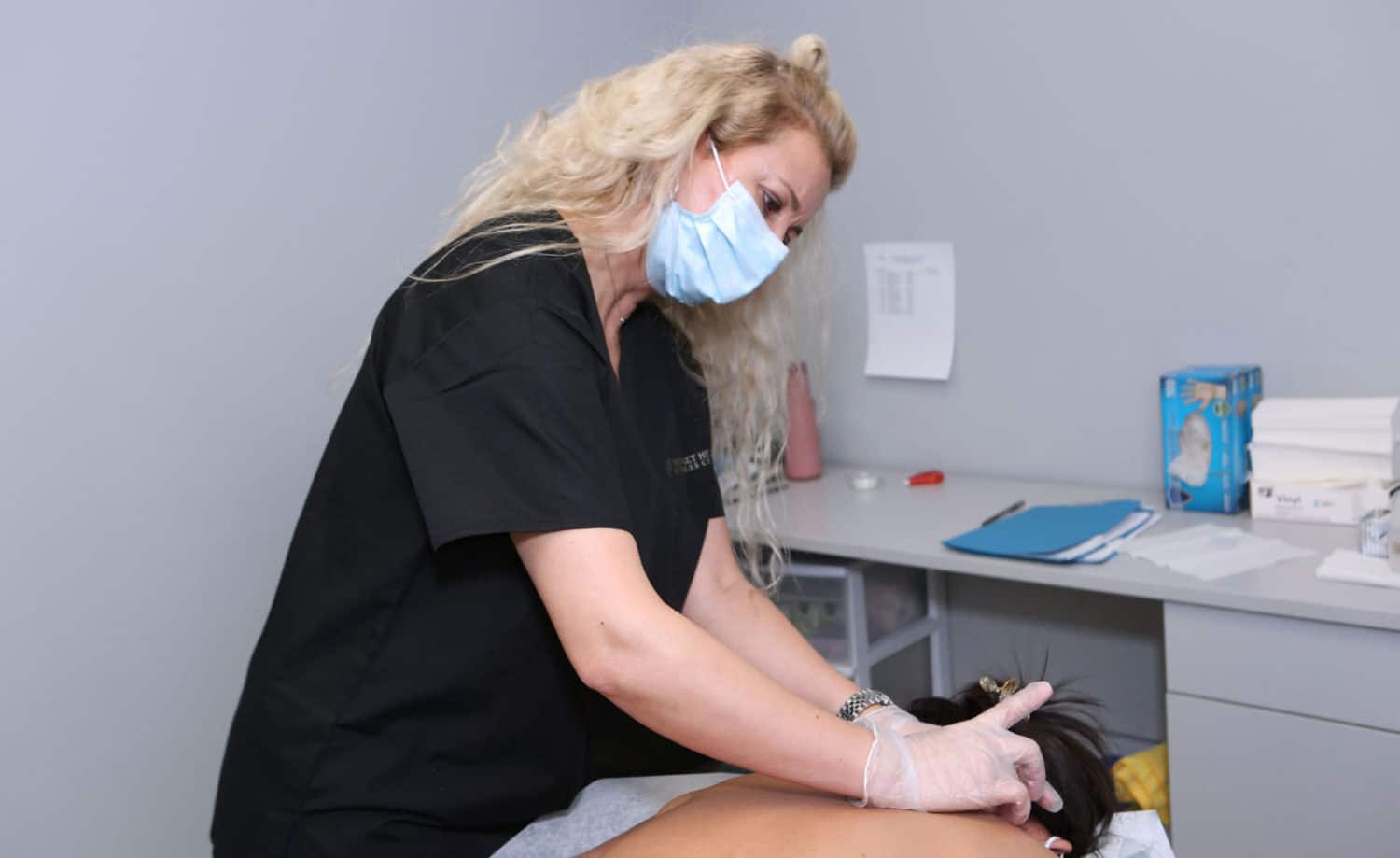Key Takeaways
Dry needling is a form of therapy that is growing in practice and application. But what exactly is it? While most people are familiar with acupuncture in theory, many wonder what the dry needling vs acupuncture difference is. Like acupuncture, dry needling is a therapy that uses fine needles to relieve pain and other symptoms. While the two are similar in that regard, they are very different in origin, technique, and use. In this article, we’ll examine the differences between dry needling vs acupuncture therapy, the benefits that each offers, and how both techniques work.
Table of Contents
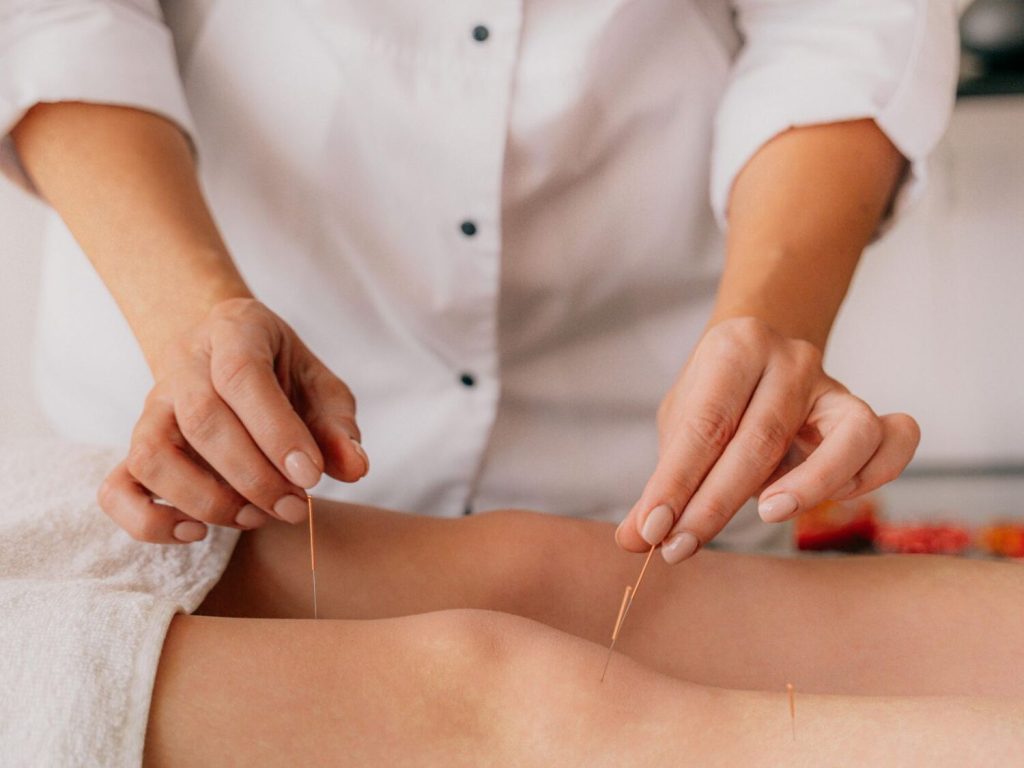
What is Dry Needling?
The reason it’s called dry needling is that the needles used do not inject any liquid into the body. This is the same for acupuncture. As mentioned earlier, dry needling and acupuncture are similar in that they both use tiny stainless-steel needles to address pain by strategically inserting these needles at specific points in the body, but that’s pretty much all the two have in common. Dry needling and acupuncture are very different. Some of the differences include:
The needles used in dry needling are a little thicker than those used in acupuncture. There is no prescribed number of needles for either acupuncture or dry needling; however, dry needling generally uses fewer needles than acupuncture. During dry needling sessions, the needles are typically left in the skin for a few minutes. For acupuncture, the length of time the needles remain inserted can be anywhere from a few minutes to up to 60 minutes.
What is a Trigger Point?
Trigger points are areas in the body between muscles that are knotted, stiff, or tense and create pain and discomfort. Pain from one trigger point can cause pain and discomfort in other points in the body. Trigger point pain can worsen due to stress, physical activity, or muscle tension.
Trigger points can significantly restrict range of motion and lead to muscle tenderness and pain. This is because they interfere with muscle function.
Trigger points can be caused by:
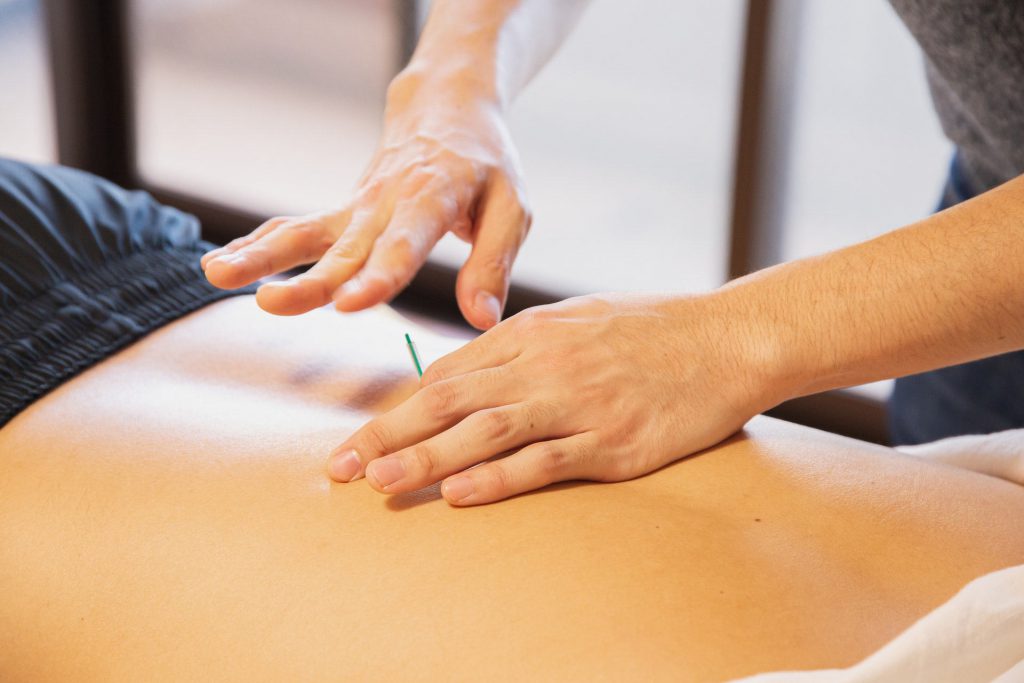
How Dry Needling vs Acupuncture Work
Dry needling, also known as intramuscular stimulation, is used to trigger areas in your connective tissue that may be limiting movement in your muscles and joints and/or causing pain. To ease tension, a practitioner will insert fine needles in trigger points just under the skin where the muscle is knotted. Two treatment techniques often used in dry needling are in-and-out dry needling treatment and non-trigger point treatment.
In-and-out dry needling treatment
The in-and-out dry needling technique only requires the needles to be inserted in the skin for a short period of time. As soon as the needle triggers a response from the muscles, it is removed. This is called pistoning or sparrow pecking. Doing this will re-align the muscle and improve its function. The used needle is then disposed of, and a new one is used for the next area.
The benefit of using this technique is that you can get a much quicker muscle response. This allows the practitioner to assess how particular muscles are impacting your movements and speeds up recovery. However, twitching responses can be strong, leading some people to opt for an alternate method of dry needling.
Non-trigger Point Treatment
Another dry needling technique used to treat the central nervous system is non-trigger point treatment, in which needles are inserted around pain points. This technique follows the understanding that pain in the body must be addressed by treating the surrounding areas, not just the pain point. This technique is considered slightly more comfortable for patients.
The needles are left in place for up to 20 minutes. The one disadvantage of this technique is that, unlike the in-and-out method, the therapist cannot provide a quick test to assess the effectiveness of treatment after each prick.
Where These Practices Originate From
Dry needling is a more modern treatment that is growing in popularity. It first emerged in the 1940s and originated in the Western world. Physicians were looking for a way to treat pain caused by trigger points and believed that targeting these muscles and triggering points could help. What they discovered is that patients experienced relief when a tiny needle was inserted in the trigger points. Acupuncture is an ancient Chinese practice that originated in China. Records show that it’s first documented use over 2,000 years ago. Since then, acupuncture has continued to be used in modern medicine.
Acupuncture vs Dry Needling Therapy
While dry needling focuses on muscle and connective tissue pain relief, acupuncture is a type of therapy that centers on balancing the energy in the body. Acupuncture addresses pain in the muscular-skeletal system and other health conditions and releases endorphins that enhance the body’s natural ability to heal. Acupuncture is used to treat a range of conditions.
Dry needling, on the other hand, treats pain and mobility issues caused by myofascial trigger points. The type of issue you are dealing with can determine which of the two techniques is most appropriate for you.
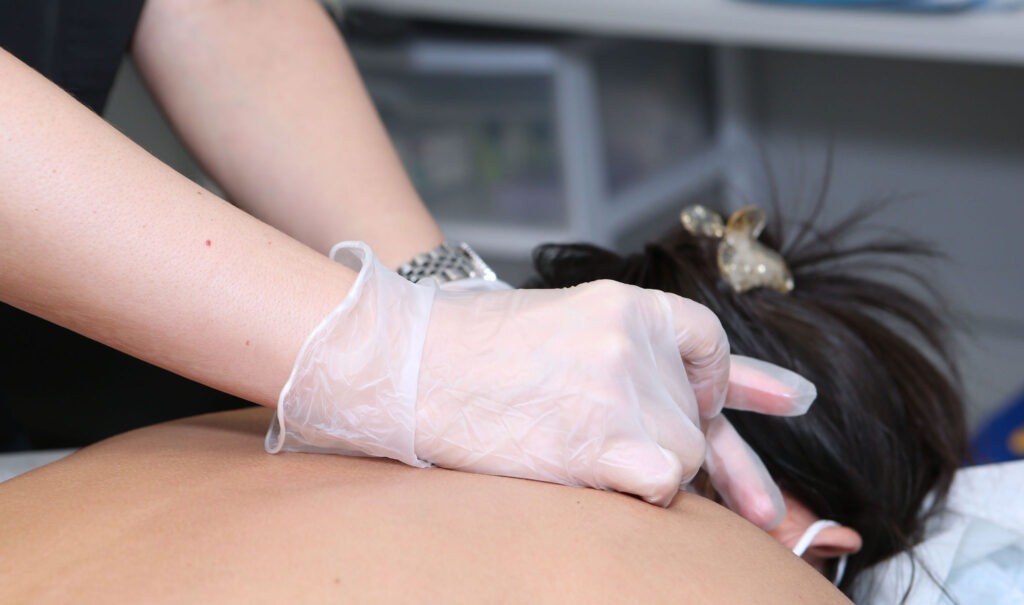
Benefits of Acupuncture
More and more people are turning to acupuncture for fertility, sciatica, and many other issues. Some of these benefits include:
Benefits of Dry Needling
Here are some of the conditions dry needling vs acupuncture treat:
| Dry Needling | Acupuncture |
| Headaches Neck pain Back pain Tendinitis Pain from a sports injury Face and jaw muscle tightness Carpel tunnel Shoulder pain Rotator cuff pain Biceps tendinitis Achilles tendinitis Low back pain Tennis elbow | Migraines Fatigue Infertility Insomnia Anxiety and depression Immune system issues Effects of menopause Neck and back pain Tendonitis Sciatica Carpal tunnel syndrome Fibromyalgia Rheumatoid arthritis |
We must point out that dry needling is a good option for many people, however, it is not recommended for pregnant women, people with bleeding disorders, or people with needle phobias or vascular disorders.
What to Expect During Dry Needling vs Acupuncture Treatment
During dry needling therapy, a practitioner will insert the needles into trigger points, which are the areas where you are experiencing muscle pain or limited range of motion. The practitioner will determine where these points are by using their hands to feel the area. The needles stay in your skin for only a few minutes. Sometimes, the practitioner may reposition a needle to get the appropriate response from the muscle and will remain in the room throughout the session. In acupuncture, the needles are inserted all over your body at specific areas called energy channels.
These points are called meridians, and there are 14 in the body. Meridians are believed to carry energy and are connected to different organs. Inserting the needles reestablishes the flow of energy in the body. What’s interesting about acupuncture is that the needles are often inserted in areas of the body that may not seem connected to the area where you are experiencing pain. Doing acupuncture, the needles are inserted in the skin for up to 20 minutes. Sometimes you may be left alone in the room so you can relax.
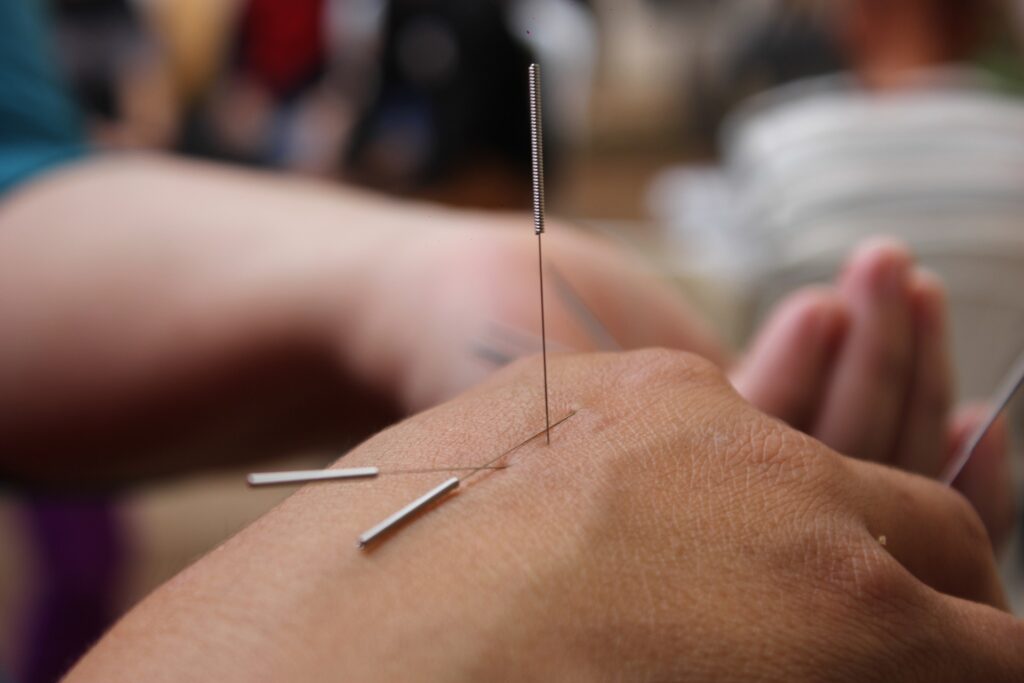
What Does It Feel Like?
Does acupuncture hurt? Let’s face it: When people see images of a person receiving acupuncture therapy, the natural assumption is that it must be painful. The truth is that neither acupuncture nor dry needling is as painful as it looks. The needles are tiny and most people don’t actually feel the needles going into their skin. Sometimes they feel a small prick, but that is usually the extent of it.
With dry needling, you may feel slight discomfort, especially since the needles are being inserted directly into trigger points that are already painful. Then, once the needle is inserted, you will likely feel your muscle twitching. This is a good sign that it is responding to the needle and lets the practitioner know they have the right spot.
Dry needling can be paired with electrical stimulation to enhance its effectiveness. When this is done, stimulation causes tense muscles to contract and relax, bringing relief. Some soreness may occur after both procedures. We recommend that you drink a sufficient amount of fluid. Being hydrated can help with movement and ease soreness.
When to Expect Relief
People who undergo acupuncture often leave the session feeling relaxed and stress-free; however, pain relief usually takes a few days to kick in. Dry needling is different in that people generally experience relief immediately. A test can be done after your session to see whether mobility has improved. You may also be asked to do certain movements at home.
Side Effects of Dry Needling vs Acupuncture
The side effects are mild and typically occur soon after a session. These include bruising around the insertion point, temporary soreness, and bleeding. Acupuncture has similar side effects. Some people feel drowsy and/or nauseous after treatment.
Why is Dry Needling Illegal?
In some parts of the world, like the US, there is controversy surrounding dry needling and whether it should be practiced. Some of the concerns are that there are no regulations on what kind of training and qualifications one must have to perform dry needling. Many acupuncturists and lawmakers argue that dry needling does not fall within the scope of expertise of physical therapists. As a result, the treatment is banned in many states, and there is a call for regulation and more clarity on which healthcare professionals are qualified to perform dry needling.
Who Will Perform Acupuncture and Dry Needling?
In Canada, physical therapists who are trained and licensed can perform acupuncture and dry needling. Newmarket Health & Wellness is licensed in both acupuncture and dry needling. Before determining whether dry needling vs acupuncture is the right therapy for you, your practitioner will evaluate your circumstances and ask questions about some of the challenges you are facing. Then they will assess your mobility and muscle function to determine whether trigger points are the problem.
Related Article: 8 BENEFITS OF ACUPUNCTURE

